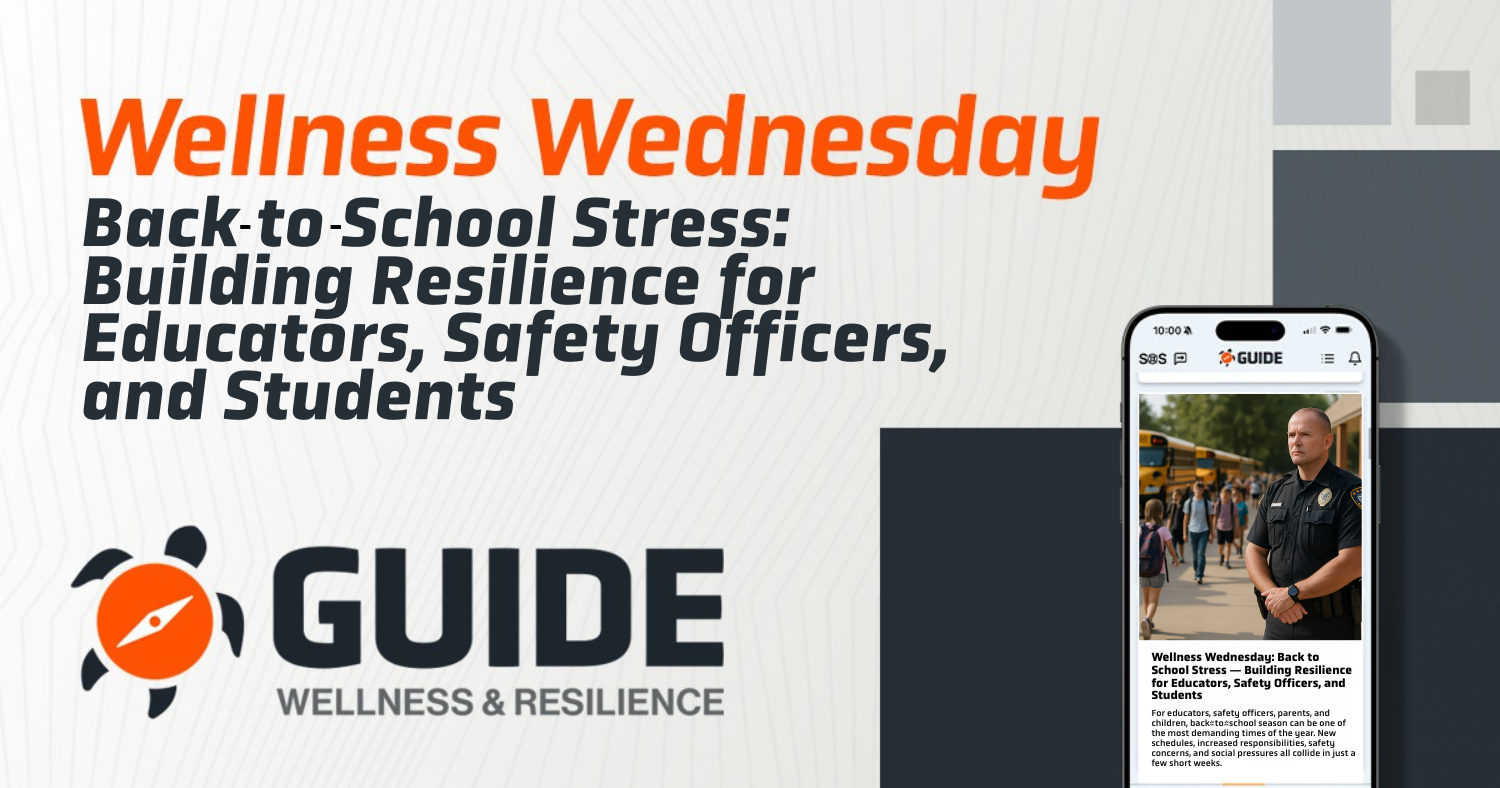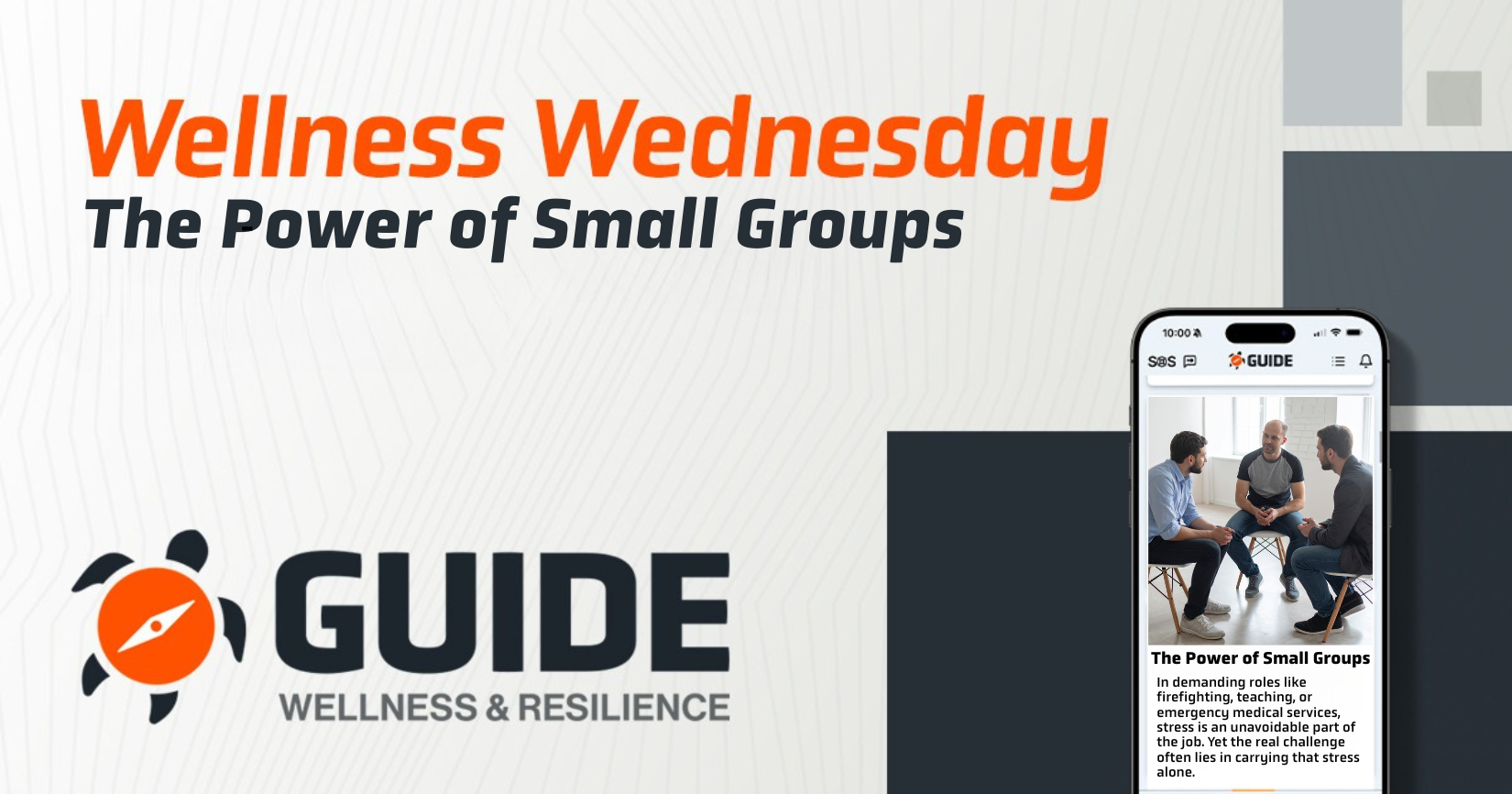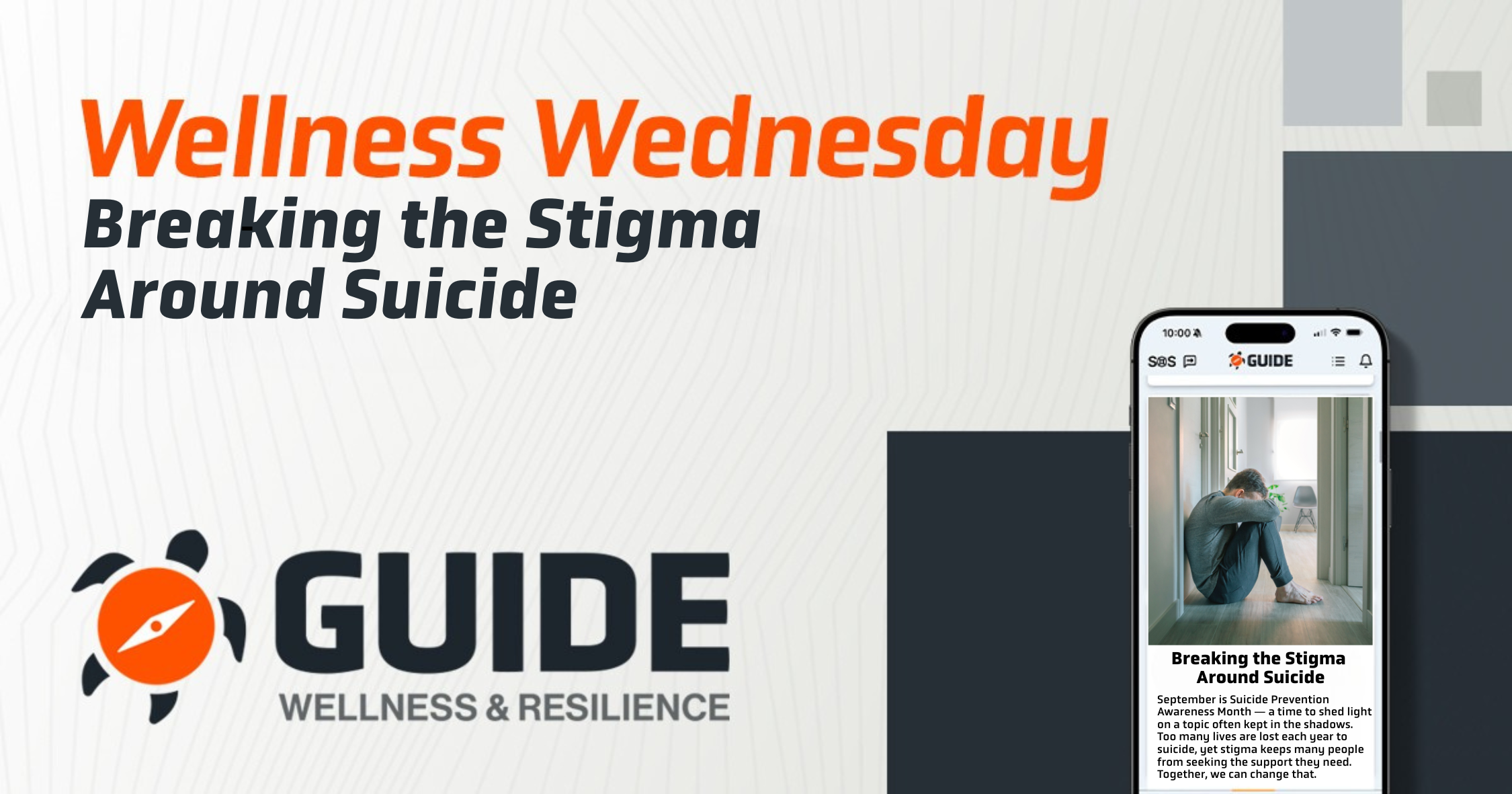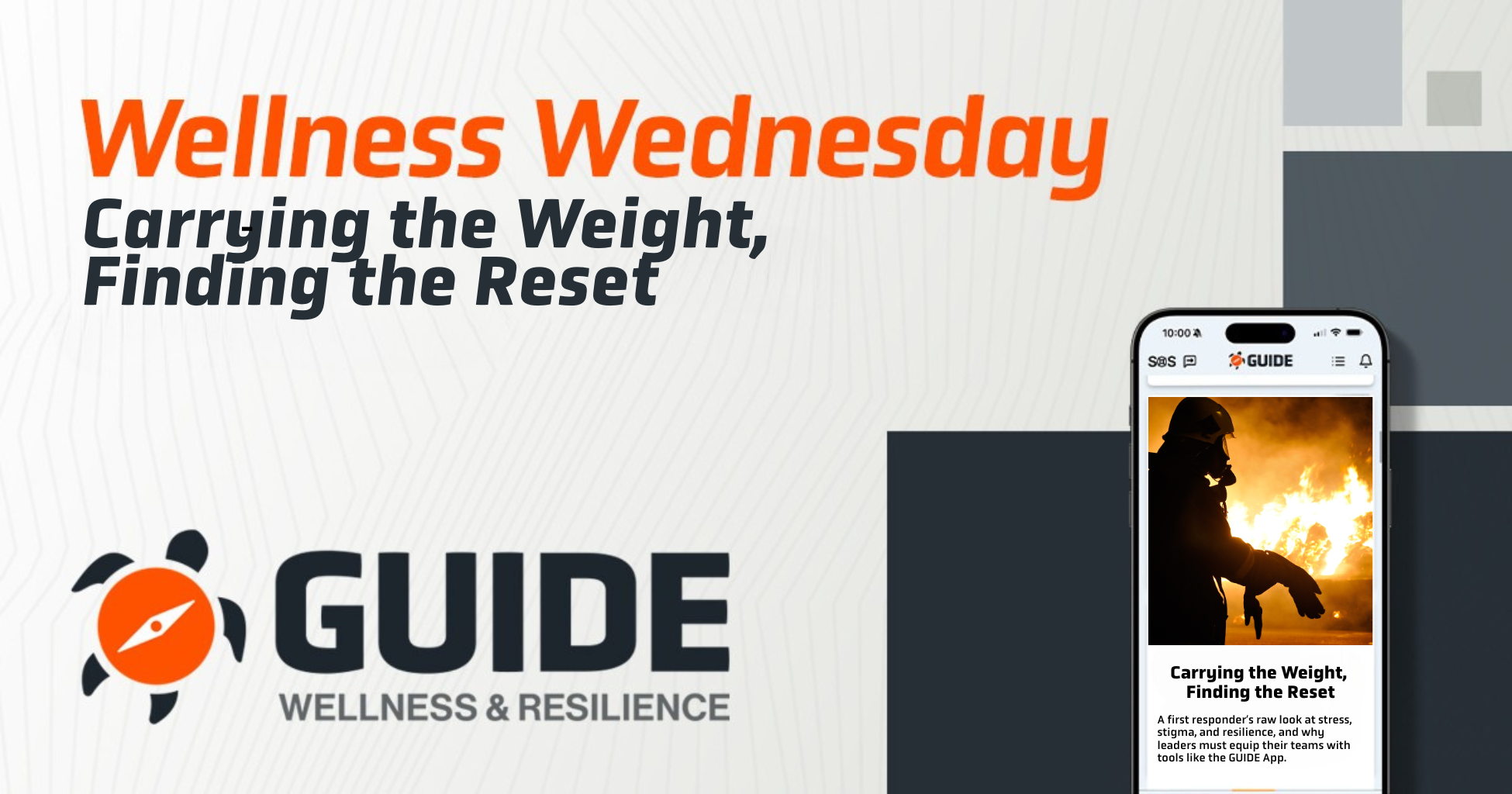The start of a new school year always feels like a fresh chapter, filled with potential, possibilities, and the promise of growth.
But alongside that excitement comes something less celebrated: stress.
For educators, safety officers, parents, and children, back-to-school season can be one of the most demanding times of the year. New schedules, increased responsibilities, safety concerns, and social pressures all collide in just a few short weeks.
The result? Even the most resilient among us can feel stretched thin.
At GUIDE, we know that resilience isn’t about avoiding stress altogether, it’s about having the tools, support, and mindset to navigate it in healthy ways. That’s why this Wellness Wednesday, we’re taking a closer look at the unique stressors facing educators, safety officers, and students this season, and offering practical strategies to help every member of the community thrive.
Why Back-to-School Stress is Different
Not all stress is created equal. While big life events (like moving, starting a new job, or welcoming a child) can cause high spikes in stress, back-to-school season is different because it combines multiple stressors all at once, and it happens every single year.
For Educators
Educators carry a unique blend of pressure and purpose.
- Preparation overload: Setting up classrooms, finalizing lesson plans, and attending training sessions, often all at once, can feel overwhelming.
- High expectations: Teachers know they’re shaping the trajectory of a child’s academic year from the very first day, and that responsibility can feel heavy.
- Emotional labor: Beyond academics, educators often serve as emotional support systems for students, navigating everything from homesickness to social conflicts.
For Safety Officers
Back-to-school season often means increased visibility and responsibility for safety officers.
- Traffic and transportation management: With more cars and buses on the road, mornings and afternoons can become high-stress periods.
- School presence: Officers may participate in safety drills, security checks, and community events, requiring adaptability and readiness.
- Heightened vigilance: The safety of children and staff depends on their ability to remain alert, calm, and responsive.
For Students and Families
Children, and the adults who support them, feel the shift just as much.
- Routine changes: Early mornings, homework, and extracurriculars can feel jarring after a relaxed summer schedule.
- Social stress: Meeting new classmates, adapting to new teachers, and navigating peer dynamics can be emotionally taxing.
- Separation anxiety: Especially for younger children, leaving home for a full day can cause worry or sadness.
The Ripple Effect of Stress
When one part of the community feels stress, it affects everyone. An anxious student may require more attention from an already overextended teacher. A distracted teacher may miss cues in the classroom that lead to disruptions. A safety officer working under fatigue may have slower reaction times.
The reality is simple: stress is contagious, but so is calm.
Practical Stress Management Strategies
The good news? There are effective, science-backed ways to manage stress and build resilience, no matter your role in the community.
For Educators
Start the day with intention
Take five minutes in the morning to breathe deeply, journal, or review a positive affirmation. It’s a small step that can set the tone for the entire day.
Build in micro-breaks
Even 60 seconds between classes to stretch or step outside can help reset your nervous system.
Set boundaries
Commit to “unplug” hours where lesson planning and grading take a back seat to rest and personal time.
Find your support circle
Peer-to-peer connection with fellow educators can offer understanding, encouragement, and shared resources.
For Safety Officers
Fuel your body for long shifts
Avoid long stretches without eating; balanced snacks and hydration can maintain focus and energy.
Debrief challenging moments
Taking a few minutes after an incident to process what happened helps prevent the buildup of unresolved stress.
Use mindfulness to stay sharp
Short grounding exercises (like naming five things you see, four you hear, three you feel) can keep your mind present.
Prioritize recovery
Use off-duty time for activities that replenish energy, hobbies, exercise, or time with loved ones.
For Parents & Caregivers
Create predictability
Set consistent wake-up, meal, and bedtime routines to give kids a sense of security.
Model healthy coping
Show your children that it’s okay to take breaks, ask for help, and manage stress in positive ways.
Talk about feelings
Encourage kids to share their worries and listen without judgment.
Stay alert to changes
Watch for sudden mood changes, difficulty sleeping, or withdrawal from favorite activities.
Helping Children Build Resilience
Resilience isn’t just for adults. Children can develop skills that help them navigate stress and change.
Ways to help kids strengthen resilience:
- Encourage problem-solving rather than jumping in to fix everything.
- Acknowledge effort — praise persistence, not just results.
- Teach relaxation techniques like slow breathing or muscle relaxation.
- Make space for play — free, unstructured play is a natural stress reliever.
The GUIDE App Advantage
The GUIDE App is built for high-stress roles like these. Together, they offer a private, easy-to-use mobile platform that supports well-being on demand.
How it helps during back-to-school season:
- Peer Support Community — Connect with others in education, safety, and caregiving roles who understand your challenges.
- On-Demand Resources — Access stress-reduction tools, mindfulness practices, and resilience training 24/7.
- Personalized Wellness Tracking — Monitor your progress and see which strategies work best for you.
When stress levels rise, quick access to the right tools can make all the difference, not just for you, but for everyone who relies on you.
A Community Approach to Wellness
Educators can’t do it alone. Safety officers can’t do it alone. Parents can’t do it alone. But together, with shared strategies, mutual support, and accessible resources, we can make back-to-school a season of strength instead of strain.
So this year, let’s commit to:
- Checking in on ourselves and each other
- Speaking openly about stress and mental health
- Using tools like The GUIDE App to stay connected, supported, and resilient
Because when we care for ourselves, we care for our communities.
If you’re an educator, safety officer, or parent navigating the back-to-school transition, download The GUIDE App today. Your well-being is the foundation for a stronger, healthier community — and it starts with taking that first step.




